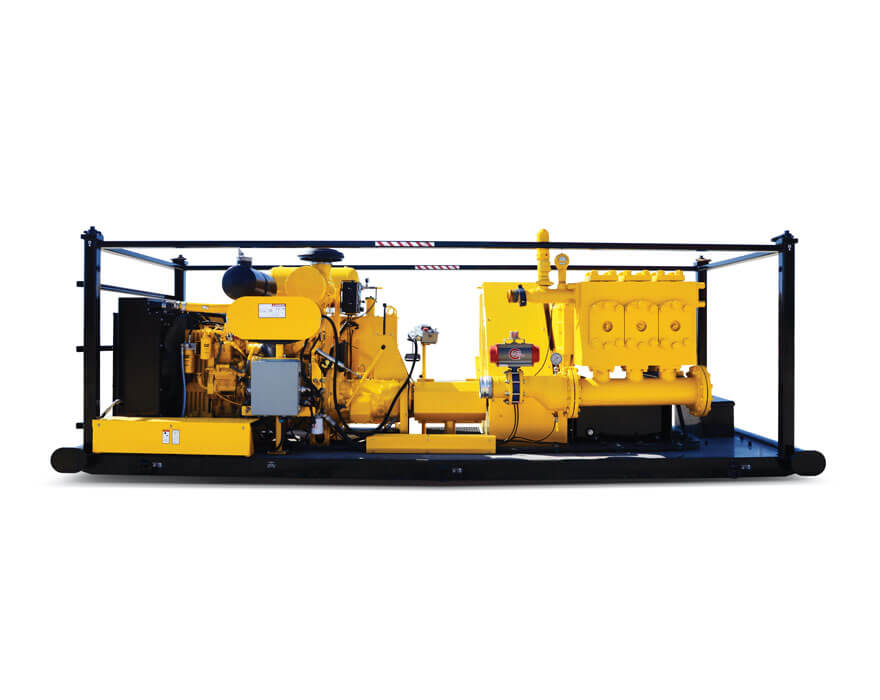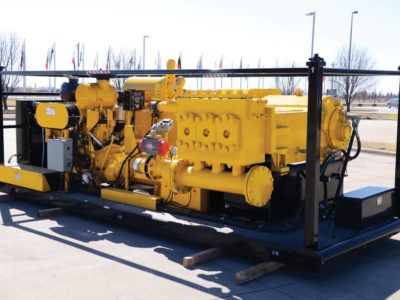Imagine this: a serious issue arises on your high-pressure stand-alone mud pump while on the job. You are faced with the decision to either buy parts and rebuild or replace the pump completely. There are a few factors that should be considered when making that decision, such as the value of your current machine, availability of parts and the ability to fix what is necessary. We’ll talk through these factors and more to help you make the most informed decision possible.
Rebuild or replace?
Rebuilding parts on a pump typically happens when liners, pistons or valves fail. Another instance where rebuilding is common is when the valve seat becomes washed out.
It is common for customers to opt for a full machine replacement when issues arise with the power end or main case. If bearings or a turned crank are needed to fix the pump, buying a new power end could be considered. If this happens, an operator should compare the cost of new parts, a new machine and the value of the current machine.
Another factor that may influence an operator’s decision between rebuilding or replacing a pump is the availability of parts. With the supply chain issues many industries are facing, long wait times for parts like bearings and races may be another determining factor between rebuilding or replacing the mud pump. Be sure to have extra parts on hand for highly-wearable pieces, such as pistons, liners, valves, valve springs and valve seats, to avoid waiting for parts when working on a tight schedule.

Challenges operators may face
Weather is the number one challenge that operators will face when maintaining their pump. Performing preventative winterizing maintenance needs to be done correctly to help the machine run efficiently. Some winterization procedures that operators should perform are:
- Draining the fluid end of the mud pump
- Draining the suction-side manifold
- Emptying fluids from charge lines
- Emptying fluids from pressure lines
- Filling the fluid end with anti-freeze
Taking the time to perform these tasks before temperatures drop will aid machine functions during those cold working months. Not only will these practices optimize performance on the jobsite, but they may also help extend the life of the machine. For more information on winterizing your mud pump, please refer to the machine operator manual.
Tips and tricks
When working with the mud pump, only use the relief pins that are provided with the machine. These are manufactured to release pressure on the pump at a calculated rate. If anything other than the provided parts are used, it can damage the rotating assemblies of the pump.
Between uses, lubricate the shear pin stem so the stem will move up and down and to help minimize seizing or corrosion. Refer to your machine’s operator’s and/or maintenance manual for further instructions and safety messages.
When you receive your new or used mud pump, remove the caps, inspect and lubricate o-rings and seals before it is used on a jobsite. Doing this before putting the pump to work is a good way to help prevent a cap or plug being seized and bringing the operation to a full stop.
There are many factors to consider when deciding between rebuilding or replacing your high-pressure stand-alone mud pump. If needed, reach out to your local Vermeer dealer to discuss all of the options available to you.
For more information about Vermeer mud pumps, contact your local dealer.
Prior to performing service or maintenance on Vermeer equipment, always refer to the product’s operator’s and/or maintenance manual for safety messages and further instructions. Vermeer Corporation reserves the right to make changes in product engineering, design and specifications; add improvements; or discontinue manufacturing or distribution at any time without notice or obligation. Equipment shown is for illustrative purposes only and may display optional accessories or components specific to their global region. Please contact your local Vermeer dealer for more information on machine specifications.
Vermeer and the Vermeer logo are trademarks of Vermeer Manufacturing Company in the U.S. and/or other countries. © 2022 Vermeer Corporation. All Rights Reserved.
